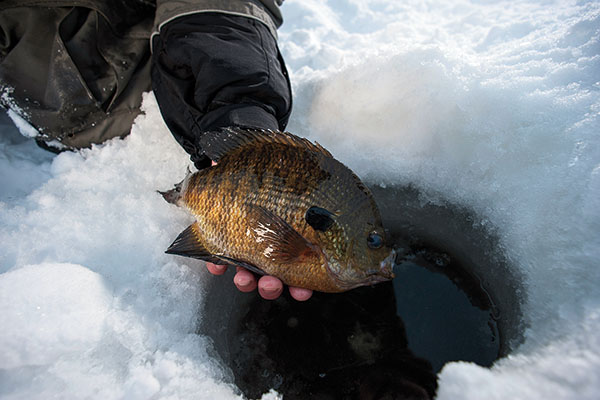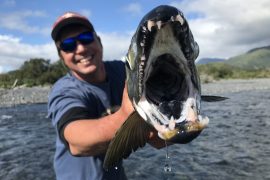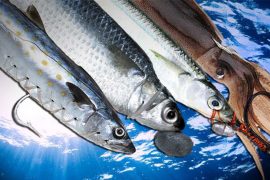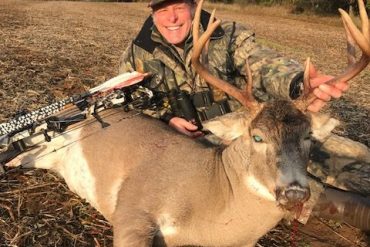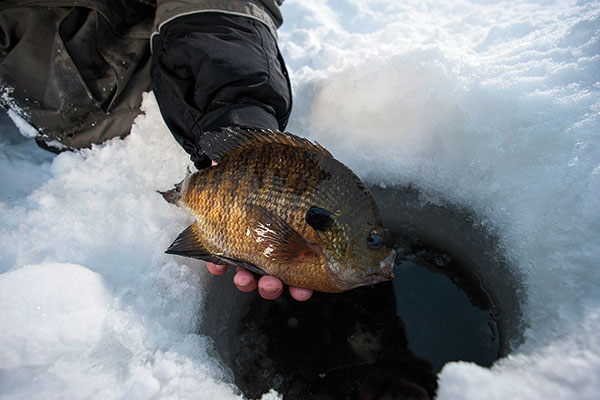
Panfish could use a press agent. Collectively, full-grown bluegills, crappies, and perch would benefit from a newer, progressive image. Maybe start with a new name—anything not synonymous with gorging oneself on piles of crispy, delicious bites of flaky white meat.
Palmfish? Funfish? The “People’s Fish?” Okay, I can’t think of anything good at the moment. But now that I mention it, I could go for a perch po’ boy sandwich. A couple 11-inchers from clear icy waters would do me just right. Might invite a few friends. Two fair perch apiece ought to get the job done.
Roll those pearly fillets in egg and milk, and dust them in Back Porch Fish Fry—my favorite batter. It’s the “ultimate” fish fry. Says so right on the label. Get the oil hot—I like 400°F when frying with canola. Drain the fillets on newspaper then lay them on toasted hoagie buns and garnish as desired with garden tomatoes, spinach, red onion, and a thin coating of lemon and caper Mayo.
Doesn’t take a mountain of fillets to feed a family. Twenty, 25, 50 or more fish? Those are some mighty hearty appetites. Consider a single deep-fried bluegill fillet can contain in excess of 200 calories. Run the numbers and you realize how much food value—and ounces of meat—lies in a limit of 25 sunfish.
Consider that in most states, a single licensed angler can legally harvest 25 to 50 sunfish daily, and many states impose no limit at all; this often also includes crappies and yellow perch. But even with liberal possession limits on waters that can stand such pressure and quickly replace harvested fish, anglers are selectively targeting and taking the largest individuals.
On ice, we’ve witnessed countless times anglers culling small fish from buckets each time they catch a larger fish. Regardless how capable a fishery is of growing and replacing larger panfish, rarely is it a bad idea to release larger individuals. I appreciate what In-Fisherman Editor In Chief Doug Stange has said about the harvest of sizable sportfish, applicable to any species: “There can never be enough big fish, no matter where you are. Even on the most fertile fish factories where biologists tell you it doesn’t hurt the fishery to kill big fish—like Lake Erie and its trophy walleyes—it’s never a waste to put a big fish back. Big fish are always more important in the water.”
I’m not sure when folks decided they needed to collect and stockpile fillets from full-grown panfish like they were currency, but that’s one thing we could change about how we view these special sportfish. Anglers have little trouble understanding the importance of releasing walleyes over about 20 inches, or stream trout beyond about 14, and certainly large bass. So why can’t we impose the same selective harvest ethic to panfish as they do other species?
Big ‘Gill Harvest: A Short History
“Big bluegills still exist,” says legendary Minnesota Guide Brian Brosdahl, who in his three-plus decades of hardcore panfishing has witnessed the fall of many fisheries. “But in the last 20 years, populations have been sniffed out and decimated. In the past five years, even some the most remote lakes I fish have been discovered and selectively vacuumed by unethical anglers. Vulnerable populations can be easily rooted out through social media now, where not everyone is ethical. It reminds me of the way buffalo were once hunted to near extinction on the frontier, but now the mission is to rid the earth of big bluegills, crappies, and perch.
“I see this ‘conquering’ mentality out there. They’re hunting fillets like it’s a gold rush. I watch the same anglers fish 7, 10, 12 days straight, parked on spots, stockpiling panfish until there’s little left. A lot of these groups work as large panfish removal machines.
“The decision to release has got to be made in advance,” Brosdahl says. “You can’t hold fish in a bucket of water until you decide to release them later. They won’t survive, unless you’ve oxygenated the water and optimized the temperature.
“We’ve got to limit catches from deep water, too. Fish that come from 25 feet or deeper are likely to die. You can’t sort or cull these fish from your bucket. If you want to fish deep, harvest your limit and stop. And if the fish are 12-inch-plus crappies or perch, consider finding a shallower spot.
“Throughout the northern tier of the ice belt—Minnesota, Michigan, Wisconsin, and into North Dakota—it can take a decade to grow an 8- or 9-inch sunfish, and that’s under ideal conditions,” Brosdahl says. “I start each guide trip by explaining that if clients insist on taking one trophy bluegill over 9-inches to mount, that’s okay. But everything else that touches 9 goes back.”
Five or 10 years ago, most fisheries would eventually rebound following a one- to three-year period of intensive wintertime harvest. But now, waves of ice anglers cycle back through previously hot lakes before they can fully recover.
In northern reaches of the ice belt we’ve been losing stocks of top-end size sunfish for over half a century. Moreover, a stock of big bluegills in a lake can be decimated in a single fishing season, or on small water, within a few weeks. For every angler ticketed by conservation officers for over-limits, assume that dozens of others are stocking freezers and “double dipping” panfish limits every day without recrimination. You know who you are and you’re only shooting yourself, the fishery, and your fellow fishermen in the gut.
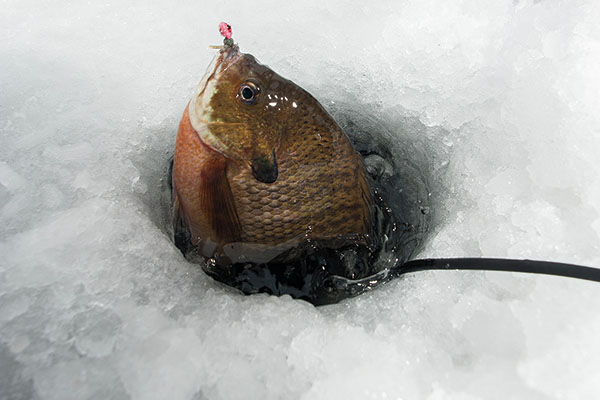
If only we’d known how rare these big old bluegills would soon become. It’s eye opening and disheartening to read historical accounts of netting and creel survey data from fish populations between 1950…

